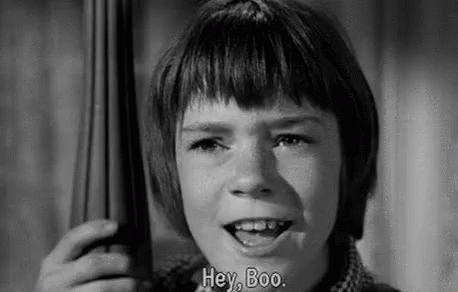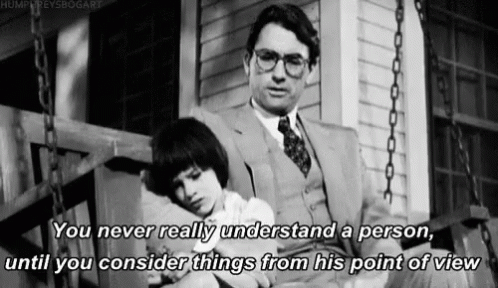Exploring To Kill a Mockingbird: Understanding the Novel and Accessing PDFs
Learn about Harper Lee’s classic "To Kill a Mockingbird" and its enduring lessons on justice and morality.

To Kill a Mockingbird, written by Harper Lee and first published in 1960, is an iconic novel that remains relevant even today. Set in the fictional town of Maycomb, Alabama, during the Great Depression, the story follows Scout Finch, her brother Jem, and their father, Atticus Finch, as they navigate issues of racism, justice, and morality. The novel has become a cornerstone of American literature, celebrated for its deep exploration of themes like racial injustice, the loss of innocence, and moral courage.
This blog will provide an in-depth look into To Kill a Mockingbird, including its major themes, characters, and its impact on readers across generations.
Table of Contents
- Overview of To Kill a Mockingbird
- Major Themes in To Kill a Mockingbird
- Key Characters in the Novel
- Why To Kill a Mockingbird is Still Relevant Today
- Accessing To Kill a Mockingbird in PDF Format
- Useful Resources for Understanding To Kill a Mockingbird
- Conclusion
Overview of To Kill a Mockingbird
Published during the Civil Rights Movement, To Kill a Mockingbird quickly became a cultural phenomenon. It won the Pulitzer Prize for Fiction in 1961 and has sold over 40 million copies worldwide. The novel is renowned for its poignant portrayal of the deep-seated racism in the American South, as seen through the eyes of a young girl named Scout Finch.
The narrative is primarily focused on the trial of Tom Robinson, a Black man falsely accused of raping a white woman, and the efforts of Scout’s father, Atticus Finch, to defend him. Throughout the story, Lee illustrates the impact of institutional racism, class discrimination, and moral ambiguity.
The novel’s blend of personal growth and societal issues creates a timeless piece of literature that continues to resonate with readers of all ages.
Major Themes in To Kill a Mockingbird
1. Racial Injustice

The theme of racial injustice is central to To Kill a Mockingbird. The novel’s depiction of Tom Robinson’s trial is a direct commentary on the racial prejudices of the time, especially in the American South. Despite overwhelming evidence of Tom’s innocence, the all-white jury convicts him solely based on the color of his skin. This outcome demonstrates the power of systemic racism and its devastating effects on individuals and communities.
Atticus Finch’s role as Tom’s lawyer symbolizes moral integrity and the fight for justice, even in the face of overwhelming societal pressure. His determination to defend Tom, despite knowing the odds are stacked against them, is a powerful statement about the importance of standing up for what is right.
2. The Loss of Innocence
The loss of innocence is another recurring theme in the novel, particularly as it pertains to Scout and Jem. At the beginning of the novel, the Finch children view their world through a lens of childlike wonder, where adults are seen as wise and just. However, as they witness the cruelty and injustice that pervade their society—particularly during Tom Robinson’s trial—they begin to understand the harsh realities of racism, hatred, and moral corruption.
Scout’s growth over the course of the novel reflects the journey from innocence to experience, as she learns about the complexities of human nature.
3. Moral Courage
One of the most celebrated aspects of To Kill a Mockingbird is its portrayal of moral courage. Atticus Finch stands as a beacon of integrity, teaching his children and the community that courage is not about physical strength, but about standing up for one’s principles even when the odds of success are slim. His decision to defend Tom Robinson is a prime example of moral bravery, as he faces threats and ostracization for his actions.
Additionally, characters like Mrs. Dubose, an elderly woman battling addiction, and Boo Radley, the reclusive neighbor, are also examples of courage in their own way, highlighting that bravery takes many forms.
Key Characters in the Novel
1. Scout Finch

Jean Louise "Scout" Finch is the narrator and protagonist of the novel. As a curious and intelligent young girl, Scout provides readers with a fresh, unbiased perspective on the events of the story. Her innocence and inquisitiveness drive much of the novel’s exploration of human nature and justice. Scout's coming-of-age journey is one of the central elements of the book.
2. Atticus Finch

Atticus Finch is Scout’s father and the moral center of the novel. As a lawyer, he is tasked with defending Tom Robinson, a Black man falsely accused of raping a white woman. Atticus’s commitment to justice and equality makes him a revered figure in literary history. He is known for teaching his children valuable life lessons, such as the importance of empathy and understanding others’ perspectives.
3. Tom Robinson

Tom Robinson is a Black man falsely accused of raping Mayella Ewell, a white woman. Despite being innocent, Tom’s trial and eventual conviction reflect the deep racial prejudices that exist in the society of Maycomb. His tragic story serves as a poignant critique of the justice system.
4. Boo Radley
Arthur "Boo" Radley is a mysterious and reclusive figure who lives in a house near the Finch family. Though he is initially viewed as a figure of fear by the neighborhood children, Boo ultimately reveals himself as a kind and protective figure. His character challenges assumptions and demonstrates that people are often misunderstood.
Further Reading:

Why To Kill a Mockingbird is Still Relevant Today
More than 60 years after its publication, To Kill a Mockingbird remains one of the most widely read and discussed novels in American literature. Its exploration of racism, inequality, and moral courage resonates deeply with readers today, particularly in light of ongoing conversations about systemic racism and social justice.
The novel continues to be taught in schools around the world and remains a powerful tool for sparking discussions about empathy, fairness, and ethical decision-making. As societal debates about racial justice continue, Harper Lee’s work serves as a reminder of the importance of confronting prejudice and standing up for the marginalized.
Useful Resources for Understanding To Kill a Mockingbird
Understanding the deeper meanings and themes in To Kill a Mockingbird can enrich your reading experience. Several resources can help provide context, analysis, and insights into the novel.
Book Summaries and Study Guides
Platforms like BookSummary.io provide detailed summaries and analyses of classic novels like To Kill a Mockingbird. These resources are especially useful for readers who want a concise overview of the plot, themes, and characters, or for those revisiting the novel after some time.
Further Reading:

Conclusion
To Kill a Mockingbird remains one of the most important and beloved novels of the 20th century, offering timeless lessons on morality, justice, and empathy. Its exploration of racism and social inequality continues to resonate with readers today, making it an essential read for those looking to understand both historical and contemporary issues.
Whether you are reading it for the first time or revisiting the novel, accessing To Kill a Mockingbird in PDF format allows you to take this classic story with you wherever you go. Just be sure to download the novel from legitimate sources, and consider using platforms like BookSummary.io to further explore its themes and insights.
Ultimately, To Kill a Mockingbird is a story that challenges us to confront injustice and understand the power of compassion—a message that is as vital now as it was when Harper Lee first wrote it.




